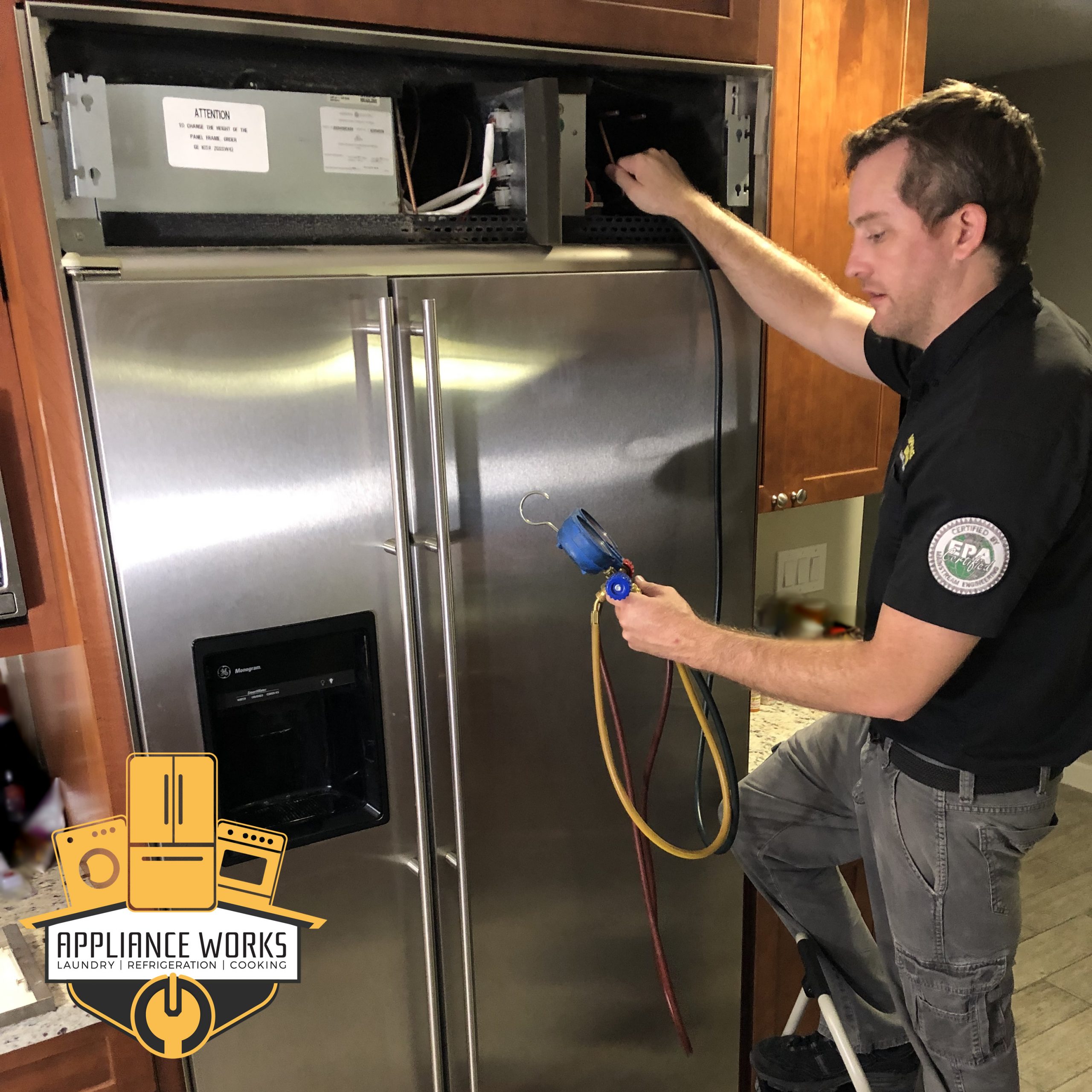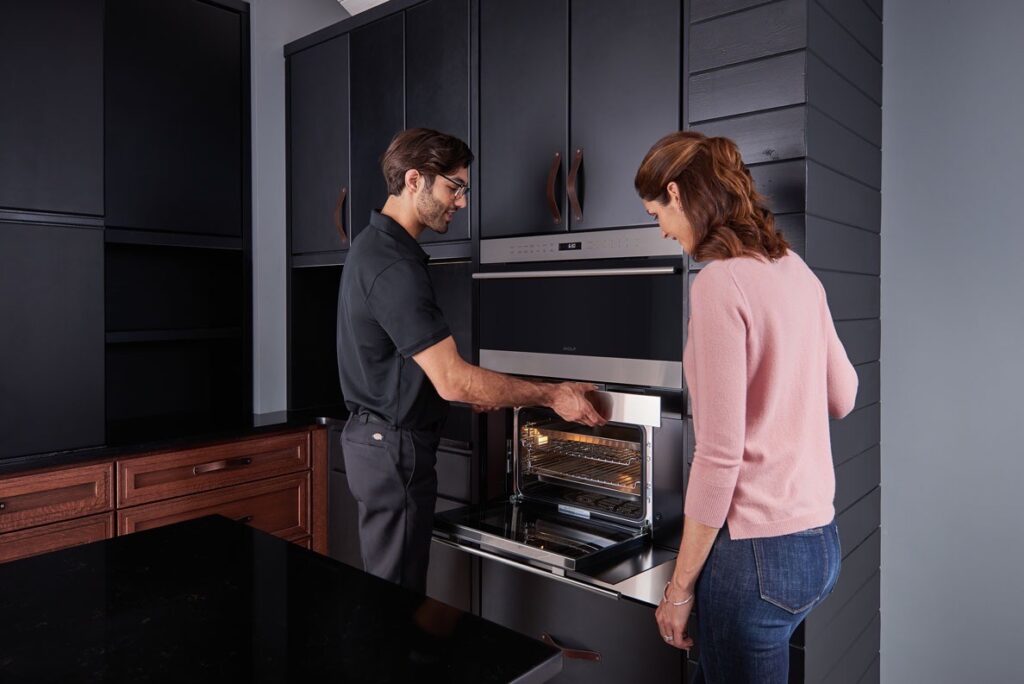Common Situations Requiring Best Sub-Zero Service Near You Dependable Refrigeration & Appliance Repair Service
The Ultimate Guide to Do It Yourself Home Appliance Repair Strategies
From refrigerators to dish washers, understanding how to repair and repair these gadgets can conserve you time and money. Are you all set to discover important methods that will encourage you to deal with repair services with confidence?
Recognizing Usual Device Troubles
When you depend on your home devices, it can be frustrating when they all of a sudden stop working or act up. Understanding common appliance problems can aid you repair concerns properly. For example, if your fridge isn't cooling down, check the temperature setups or check the door seal for spaces. A defective cleaning device could be due to a clogged drainpipe filter or a damaged belt.
If your oven isn't home heating, faulty components or thermostat problems could be to condemn,. Dishwashing machines frequently experience troubles with drain, so see to it the filter is clean and the drainpipe hose pipe isn't kinked.
Additionally, listen for uncommon noises; they often indicate mechanical concerns. By recognizing these indications, you can save time and potentially stay clear of expensive fixings. A little understanding goes a lengthy method in keeping your home appliances, so remain informed to maintain everything running smoothly.
Essential Tools for Do It Yourself Repair Works
Prior to diving right into DIY appliance fixings, it is necessary to collect the right tools to ensure the process goes smoothly. Start with an excellent collection of screwdrivers, including both flathead and Phillips, as they're vital for opening most home appliances. You'll also desire a pair of pliers for gripping and twisting cords or little parts.
Do not forget a multimeter; it assists you examination electrical elements and detect problems effectively. An outlet set is handy for loosening or tightening bolts, while an energy knife can be helpful for cutting cables or opening up product packaging.
Lastly, take into consideration having a flashlight available to brighten dark rooms inside your devices. With these essential tools, you'll be well-equipped to deal with various repair services, conserving both money and time. Gather your equipment and get prepared to roll up your sleeves!
Security First: Safety Measures to Take
Prior to you start any appliance repair work, it's necessary to focus on safety and security. Ensure you use personal protective equipment, disconnect the power source, and maintain your workspace organized. These basic preventative measures can assist prevent accidents and assure a smoother repair procedure.

Individual Protective Devices
Safety and security gear is a necessary part of any kind of Do it yourself home appliance repair task. Steel-toed boots are also a clever option, especially when raising heavy appliances. Keep in mind, being prepared with the best equipment keeps you safe and concentrated on finishing your repair service successfully.
Power Resource Disconnection
To assure a safe Do it yourself appliance repair, detaching the power resource is crucial. This basic step avoids electrical shocks and guarantees that you can focus on the repair work without stressing regarding unintended activation. Once you're certain that the power is disconnected, you can with confidence continue with your repairs, knowing you've taken the required precautions to shield yourself.
Workspace Organization
A well-organized job area can make all the distinction in your DIY device repair work task. Start by removing your workspace of mess to prevent disturbances and accidents. A clean area not just increases efficiency however also keeps you secure while you work on your device repair work.
Step-by-Step Guide for Fridge Repairs
When your fridge starts breaking down, it can be discouraging, but taking on the issue on your own can save you money and time. First, unplug the refrigerator to ensure safety. Check for usual concerns like temperature level changes or unusual noises. Evaluate the thermostat setups; they could be set too high if it's not cooling. Next, clean the condenser coils, which often collect dust and debris. For a noisy fridge, inspect the fan and confirm it's not blocked.
If there's water pooling inside, inspect the door seals for damage or dust, and tidy them if needed. When you've resolved the concern, connect the fridge back in and check it for a couple of hours.
Taking Care Of Washing Machine Issues
Similar to refrigerators, cleaning devices can offer their own collection of challenges, but several issues can be fixed with a little bit of troubleshooting. Initially, if your device will not begin, check the power cable and verify it's connected in. Next, examine the door lock; a faulty lock can avoid the cycle from beginning. If you observe unusual sounds during procedure, it may be because of foreign items stuck in the drum or the drain pump.
If your clothing aren't getting clean, take into consideration the water level and detergent type; using as well much cleaning agent can develop excess suds, influencing performance. For leaks, take a look at the tubes for cracks or loose connections. Tightening up these can frequently solve the trouble. Normal upkeep, like cleaning up the filter, can stop numerous issues from arising. Remember, a little troubleshooting goes a lengthy method in keeping your cleaning maker running smoothly.
Fixing Cooktops and ovens
How can you repair usual issues with your stove or oven? Start by checking the power supply. Make sure it's plugged in and the circuit breaker is not stumbled. Confirm the gas shutoff is open if it's a gas stove. Next off, this contact form test the burners: if they do not spark, clean the igniter and look for blockages in the burner ports.
If your stove isn't heating, inspect the temperature level settings and verify the door seals tightly. If it's damaged., a malfunctioning home heating aspect could additionally be the perpetrator; you might require to replace it.
For irregular food preparation, revolve your pans and take into consideration using an oven thermostat to validate accurate temperatures. If you listen to uncommon sounds or smell gas, turn off the home appliance quickly and consult an expert. By adhering to these actions, you can recognize and deal with lots of usual stove and stove problems successfully.
Fixing Dishwashers Made Easy
When your dishwashing machine begins breaking down, it can be irritating, however addressing usual issues isn't as difficult as it appears. You'll learn step-by-step troubleshooting techniques that will help you pinpoint the problem, along with the vital devices you'll need to deal with repair work yourself. Let's make repairing your dishwasher a wind!
Usual Dish Washer Problems
While dish washers are created to make your life much easier, they can occasionally face typical problems that leave you feeling frustrated. One frequent trouble is inadequate cleansing performance; this typically happens due to clogged spray arms or unclean filters. You may additionally observe water pooling at the bottom, which can indicate a kinked pipe or a damaged drainpipe. It could be a straightforward problem with the latch mechanism or door seal if your dish washer's door won't latch. In addition, unusual sounds can indicate loose components or damaged components. Ultimately, if you smell something strange, it may be time to inspect for food debris or a malfunctioning motor. Attending to these issues early can save you time and trouble in the future (Authorized Subzero Repair Tucson Dependable Refrigeration & Appliance Repair Service).

Detailed Troubleshooting
Before diving right into repair services, it's vital to determine the specific problem your dishwasher is dealing with. Beginning by checking if it's not cleansing properly. Inspect the spray arms for blockages and warranty they rotate easily. Take a look at door seals and tubes for any damage if it's dripping. For strange sounds, listen carefully throughout cycles; international things may be stuck in the filter or impeller. If your dish washer will not start, check the power supply and door latch. Do not forget to consult your individual handbook for fixing ideas details to your model. By methodically attending to each possible concern, you can determine the trouble and take the essential actions to fix it, making your dishwasher function like brand-new once more.
Necessary Repair Service Devices
When fixing your dishwashing machine,Having the right tools at your disposal can make all the distinction. Beginning with a screwdriver collection, as you'll commonly require both Phillips and flathead alternatives. A multimeter's necessary for detecting electric issues, while pliers can assist you grasp and manipulate various components. Don't neglect a container or towels for any water splashes during repair work.
If you're taking on clogs, a drain snake or a wet/dry like it vacuum will certainly be very useful. You might likewise want a level to assure your dish washer's appropriately lined up. Lastly, safety and security gear like handwear covers and goggles will protect you while you work. With these necessary tools, you'll be well-equipped to tackle any kind of dish washer fixing obstacle that comes your means.
Regularly Asked Questions
If a Home Appliance Is Well Worth Fixing?, just how Do I Figure out.
To figure out if an appliance's worth fixing, consider its age, repair prices, and existing worth. You might want to spend in a new version instead - Dependable Appliance For SubZero Freezer Repair. if fixings go beyond half the replacement price.
Can I Discover Substitute Components Locally for My Home Appliance?
Yes, you can usually discover substitute components in your area for your appliance. Examine equipment shops, home appliance fixing stores, or local classifieds. Do not forget to bring the version number to ensure you obtain the proper part!
When Repairing Devices?, what Common Mistakes Should I Stay Clear Of.
When fixing devices, stay clear of hurrying with diagnostics, disregarding safety and security precautions, or using inaccurate devices. Don't miss checking out manuals or watching tutorials; they provide visit necessary guidance. Hold your horses and detailed to ensure effective repair services and avoid further damages.
For how long Does a Regular Do It Yourself Device Fixing Take?
A typical DIY device repair service usually takes one to 3 hours, relying on the complexity. You'll wish to collect your products and tools initially, and follow instructions meticulously to stay clear of unnecessary delays.
Are There Any Type Of Service Warranties for Do It Yourself Device Fixes?
When you deal with do it yourself home appliance repair work, warranties generally don't cover your work. Some suppliers might recognize guarantees for parts you replace. Constantly inspect your device's service warranty terms before beginning any type of repair services to stay clear of concerns.
Prior to diving right into DIY appliance repair work, it's essential to collect the right devices to assure the procedure goes smoothly.Before you start any device repair, it's necessary to prioritize safety.To assure a risk-free Do it yourself device repair work, disconnecting the power source is important.A well-organized work area can make all the distinction in your DIY home appliance repair service task. Always inspect your home appliance's guarantee terms before beginning any type of repair services to stay clear of issues.